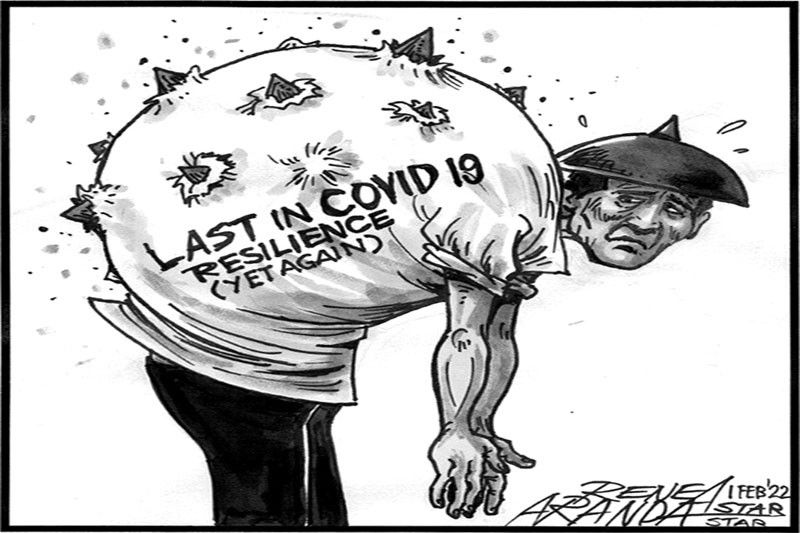EDITORIAL - Back to the bottom

After edging up by three spots last December, the Philippines sank back to the bottom of the COVID-19 Resilience Ranking this January, for the third time in five months. The ranking, drawn up by media and data company Bloomberg, again rated the Philippines as the worst place to be during the pandemic among the world’s 53 largest economies.
The slide back to the bottom was due to the return to Alert Level 3 in the National Capital Region and several other areas following a renewed surge in COVID-19 cases driven by the highly contagious Omicron variant.
Explaining the Philippines’ return to the bottom spot, Bloomberg also said in its report: “Difficulties administering vaccines in remote areas continue to be a vulnerability as the country sees an Omicron surge worse than other Southeast Asian countries like Malaysia, Indonesia and Thailand.”
The resiliency rankings are based on the number of COVID cases and deaths, vaccine coverage, lockdown severity, universal health care coverage, community mobility and human development index.
While the Philippines managed to emerge last year from deep recession in 2020, its worst economic performance since World War II, the quality of the pandemic response has led many analysts to describe the country as the regional laggard in recovery. The response has been hampered by insufficient COVID testing, disastrous contact tracing, and a health infrastructure that has been inadequate even before the pandemic.
Coming from a low base amid the 9.5 percent gross domestic product contraction in 2020, GDP grew by 5.6 percent last year. The government says this is the best proof of the country’s resilience. Economic growth from a low base, however, must be accompanied by greater effort to improve public health care capacities. COVID-19 has highlighted the weaknesses of the health care system. The country does not need the resilience index to see where improvements are urgently needed.
- Latest
- Trending


























